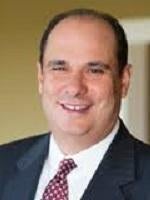In a recent decision, Ass’n for Molecular Pathology v. U.S. Patent and Trademark Office et al., No. 2010-1406 (Fed. Cir. July 29, 2011), the Federal Circuit held that isolated DNA sequences are patenteligible subject matter under 35 U.S.C. § 101 (Section 101).
Background
On May 12, 2009, the American Civil Liberties Union (ACLU), on behalf of several medical associations, advocacy organizations, physicians, researchers, and individuals, filed a declaratory judgment lawsuit, naming the U.S. Patent and Trademark Office (USPTO) and Myriad Genetics, Inc. (Myriad) among the defendants. The ACLU challenged the validity and constitutionality of Myriad’s BRCA1/2 breast cancer gene patents.
Myriad’s patents, however, are not unusual or unique in view of the USPTO’s present rules and practice and the courts’ legal precedents. The USPTO has taken the position that isolated and purified genes are chemical compounds, albeit complex ones, and thus qualify for potential patenting as compositions of matter. Thus, the USPTO’s position has been that, although a naturally occurring product (as it exists in nature) cannot be patented, naturally occurring products that have been isolated and purified should be patent-eligible subject matter. For this reason, since 1975, the USPTO has issued more than 15,000 patents with claims containing the word “gene,” and current estimates are that approximately 50,000 gene patents have been issued over the years.
Accordingly, in challenging the validity of Myriad’s gene patents, the ACLU attacked the legality of at least a significant part of all issued gene patents. Specifically, the ACLU disagreed with the USPTO’s current practice and the courts’ precedents by stating in its declaratory judgment complaint that “[e]very person’s body contains human genes, passed down to each individual from his or her parents. These genes determine, in part, the structure and function of every human body. This case challenges the legality and constitutionality of granting patents over this most basic element of every person’s individuality.”
District Court Ruling
On March 29, 2010, the U.S. District Court for the Southern District of New York ruled in favor of the ACLU and held that Myriad’s claims reciting isolated BRCA1/2 breast cancer genes were invalid. 2 Section 101 of the U.S. Patent Law defines the categories of statutory subject matter as “any new and useful process, machine, manufacture, or composition of matter or any new and useful improvement thereof.” As the U.S. Supreme Court has noted, the terms in Section 101 reciting “manufacture” and “composition of matter,” modified by the comprehensive “any,” are “expansive terms,” and “the language of Section 101 is extremely broad.” Specifically, the Supreme Court previously interpreted Section 101 broadly to include “anything under the sun that is made by man.” Diamond v. Chakrabarty, 447 U.S. 303,309 (1980). The broad reading of Section 101, however, has a limit. In interpreting Section 101, the Supreme Court has recognized three narrow categories of subject matter that fall outside the scope of Section 101: “laws of nature, physical phenomena, and abstract ideas.” Bilski v. Kappos, 130 S.Ct. 3218, 3225 (2010).
In his opinion, district court judge Robert W. Sweet reasoned that Myriad’s challenged claims encompass patent-ineligible subject matter because the underlying BRCA genes exist in nature and thus are part of the laws of nature, which are not patentable.
Federal Circuit Decision
On appeal, the Federal Circuit reversed Judge Sweet’s decision and ruled that isolated DNA sequences are patent-eligible subject matter under Section 101. In reviewing the district court’s decision, the Federal Circuit began by setting out the legal framework established by the Supreme Court for patenteligible subject matter in important earlier Supreme Court decisions: Diamond v. Chakrabarty, 447 U.S. 303 (1980), and Funk Brother Seed Co. v. Kalo Inoculant Co., 333 U.S. 127 (1948). In those cases, the Supreme Court stated that the distinction made “between a product of nature and a human-made invention for purposes of § 101 turns on a change in the claimed composition’s identity compared with what exists in nature.” Relying on the Supreme Court’s earlier rulings, the Federal Circuit therefore reasoned that Myriad’s claims that “cover molecules that are markedly different—[that is,] have a distinctive chemical identity and nature—from molecules that exist in nature,” are drawn to patent-eligible subject matter under Section 101.
Specifically, with respect to the isolated DNA sequences, the Federal Circuit majority pointed out that these molecules no longer retain the chemical bond that the naturally occurring genes would have with other genetic materials, stating that the “covalent bonds in this case separate one chemical species from another.” The Federal Circuit majority further emphasized that “the PTO has issued patents directed to DNA molecules for almost thirty years,” and noted that any change in the law to exclude DNA inventions from the broad scope of Section 101 would have to come from Congress, not the courts.
While reversing the district court’s decision on the patentability of isolated DNA sequences, however, the Federal Circuit affirmed the district court’s decision on the patentability of some of Myriad’s diagnostic method claims. Specifically, the Federal Circuit found that the claims directed to the methods of comparing or analyzing sequences only cover abstract mental processes and therefore fell outside Section 101 in view of the Supreme Court’s famous Bilski decision.
Based on this decision by the Federal Circuit, isolated DNA sequences remain patent-eligible subject matter. The Federal Circuit, however, affirmed the district court’s finding that the diagnostic method claims that are not tied to a machine or a transformative step are invalid.
A copy of the opinion can be found at http://www.cafc.uscourts.gov/images/stories/opinions-orders/10-1406.pdf.






 />i
/>i


